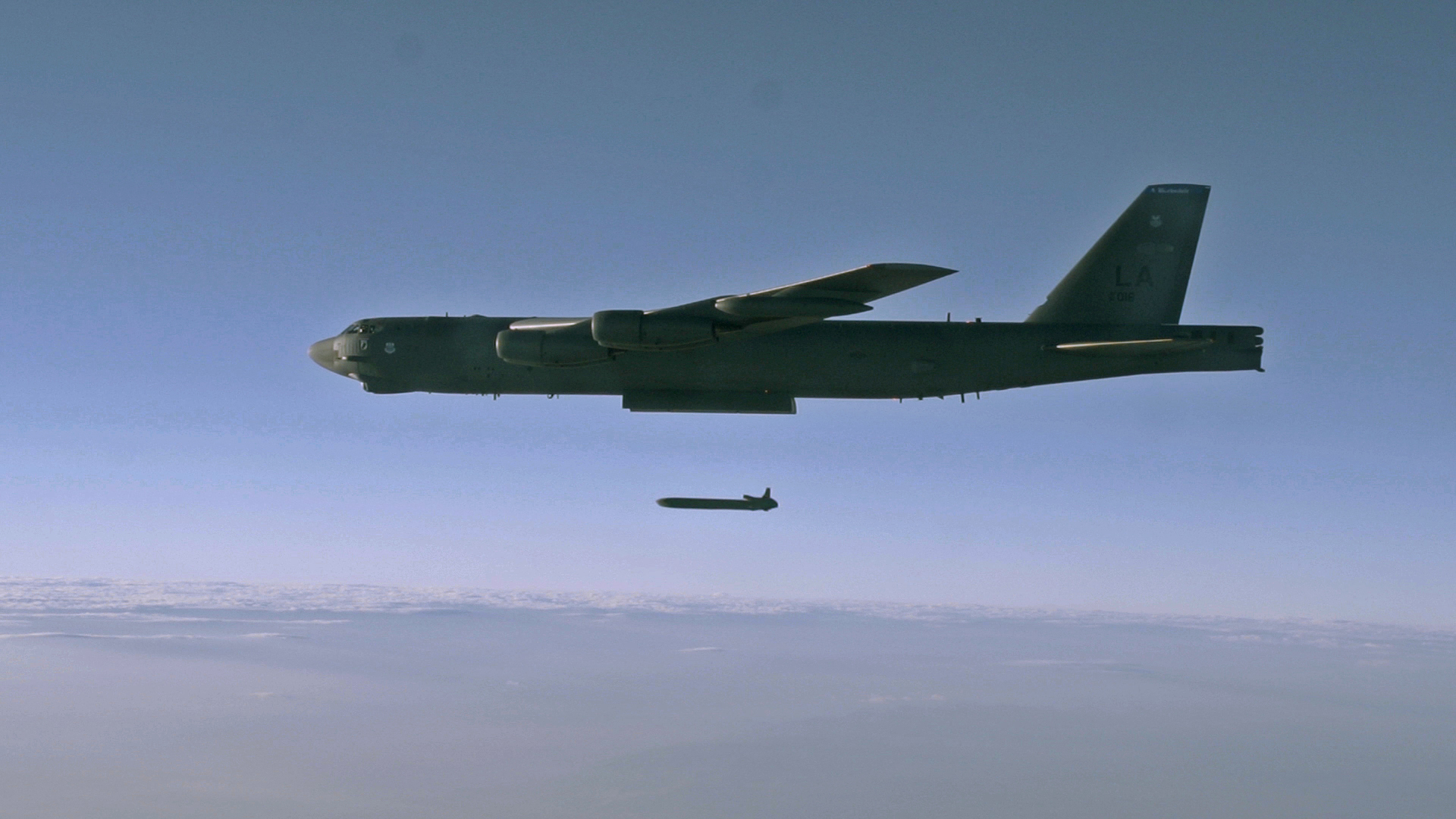
The Air Force is asking for an additional $85 million to fund technology maturation and risk reduction contract work for the Long-Range Standoff nuclear-capable cruise missile slated to replace the Air Launched Cruise Missile, shown here, which is already 20 years past its planned retirement. Air Force photo by SSgt. Roidan Carlson.
The Air Force submitted a $1.44 billion unfunded priorities list to congress, including $800 million in classified programs, $351.4 million for space, and $289.3 million for nuclear and multi-domain command and control requirements.
Interestingly, the service did not say it needed additional F-35s—or any other known aircraft—if it were to receive additional funds in Fiscal 2019. That’s a significant departure from the $10.7 billion Fiscal 2018 unfunded priorities list, which sought money for 14 additional F-35A strike fighters, three more KC-46 tankers, and 12 more MC-130Js.
The most expensive item in the Fiscal 2019 request for space was a request for $102.3 million for Enterprise Ground Services to “support an additional four customers” at three locations. EGS is a common ground system for satellites that is expected to save the service money even as it bolsters its space capabilities.
The Air Force requested $57.3 million for EGS in its Fiscal 2019 budget and said it planned to “focus efforts on developing and integrating data centers in laboratories at three separate sites, advanced concept exploration, prototype development and demonstrations, user experience maturation, training and concept of operations refinement, cyber operations, and operational mission training support,” according to budget documents.
The service also is asking for $50 million for its Blackjack project with DARPA, which would fund “cooperative on-orbit demonstration of co-orbiting military missile warning constellations embedded within commercial LEO mega-constellation and space-cloud network infrastructure,” according to the unfunded priorities list document.
Under the Blackjack project, DARPA has asked industry to provide proposals (due March 15) for affordable, mass reproducible space payloads and satellite buses, reported Space News.
“We are looking at how we leverage the commercial sector at LEO, how we leverage the manufacturing of smaller cheaper satellite buses, and looking at how we put our payloads into those more affordable buses,” DARPA director Steven Walker told defense reporters on Thursday.
The Air Force also asked for $85 million to fund technology maturation and risk reduction contract work for the Long-Range Standoff nuclear-capable cruise missile. The LRSO is expected to replace the current AGM-86B Air Launched Cruise Missile, which is already 20 years past its planned retirement.
The service requested $533.9 million in research, development, test, and evaluation funds for the LRSO in its Fiscal 2019 budget request, a significant increase over the Fiscal 2018 request of $331 million. However, according to the unfunded priorities list, there is still “insufficient funds” for the program “through FY18 and FY19.”
The service says it could use another $69.4 million to fund the Ground Based Strategic Deterrent technology maturation and risk reduction work. Lockheed Martin initially said it was considering a protest of the service’s decision to award Boeing and Northrop Grumman parallel contracts to prototype and develop a follow-on to the aging Minuteman III ICBM, but later decided against the effort, accelerating the timeline and causing a “disconnect” in program funds, according to the UPL document.
The service also has asked for additional funds to upgrade its B-52 bomber fleet, which it now plans to keep in service until 2050 (See: Bombers in 2050 from the April issue of Air Force Magazine.)